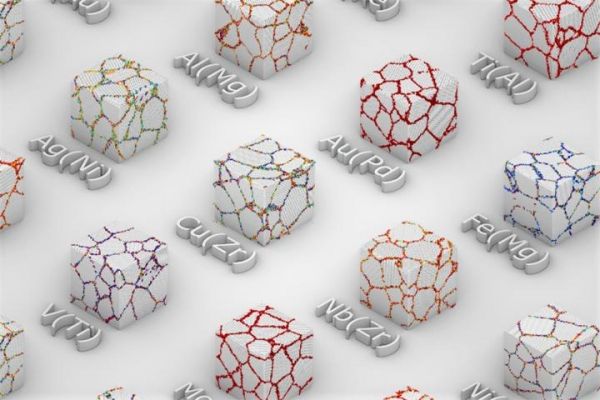Advanced metal alloys are essential in key parts of modern life, from cars to satellites, from construction materials to electronics. But creating new alloys for specific uses, with optimized strength, hardness, corrosion resistance, conductivity, and so on, has been limited by researchers’ fuzzy understanding of what happens at the boundaries between the tiny crystalline grains that make up most metals.
When two metals are mixed together, the atoms of the secondary metal might collect along these grain boundaries, or they might spread out through the lattice of atoms within the grains. The material’s overall properties are determined largely by the behavior of these atoms, but until now there has been no systematic way to predict what they will do.
Researchers at MIT have now found a way, using a combination of computer simulations and a machine-learning process, to produce the kinds of detailed predictions of these properties that could guide the development of new alloys for a wide variety of applications. The findings are described today in the journal Nature Communications, in a paper by graduate student Malik Wagih, postdoc Peter Larsen, and professor of materials science and engineering Christopher Schuh.
“Cassava has garnered a reputation for depleting nutrients in the soil,” said Ma. Eliza J. Villarino, a researcher at the Alliance of Bioversity International and the International Center for Tropical Agriculture (CIAT). “Evidence suggests it could potentially revive degraded land and make it productive anew, generating numerous positive socioeconomic and environmental impacts with proper crop management.”
Read more at: Massachusetts Institute of Technology
Researchers have found a new way to predict the properties of metal alloys based on reactions at the boundaries between the crystalline grains of the primary metal. In this image, the colored dots indicate the likelihood that atoms will collect along these boundaries rather than penetrating through. (Photo Credit: Image courtesy of the researchers)


